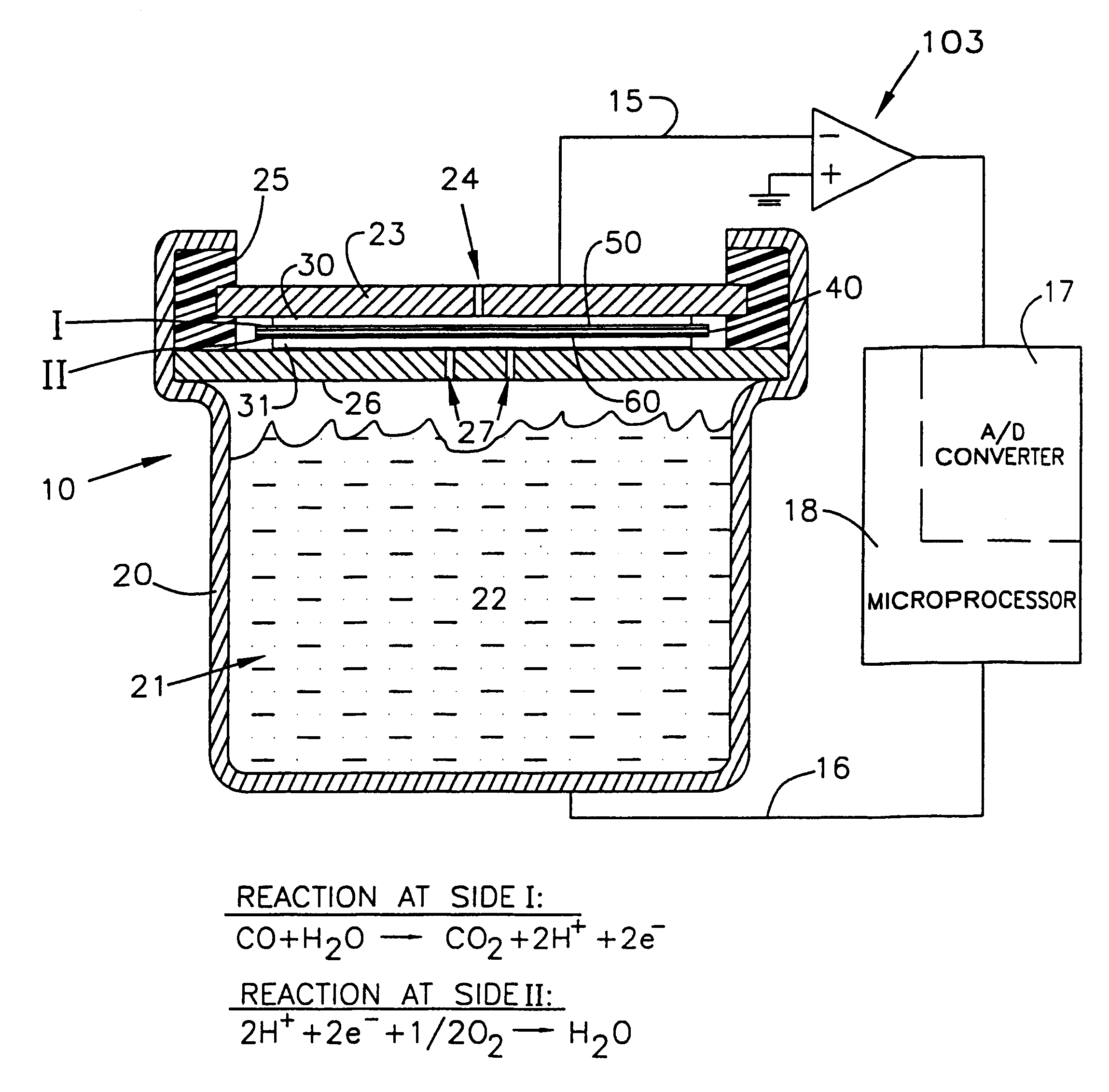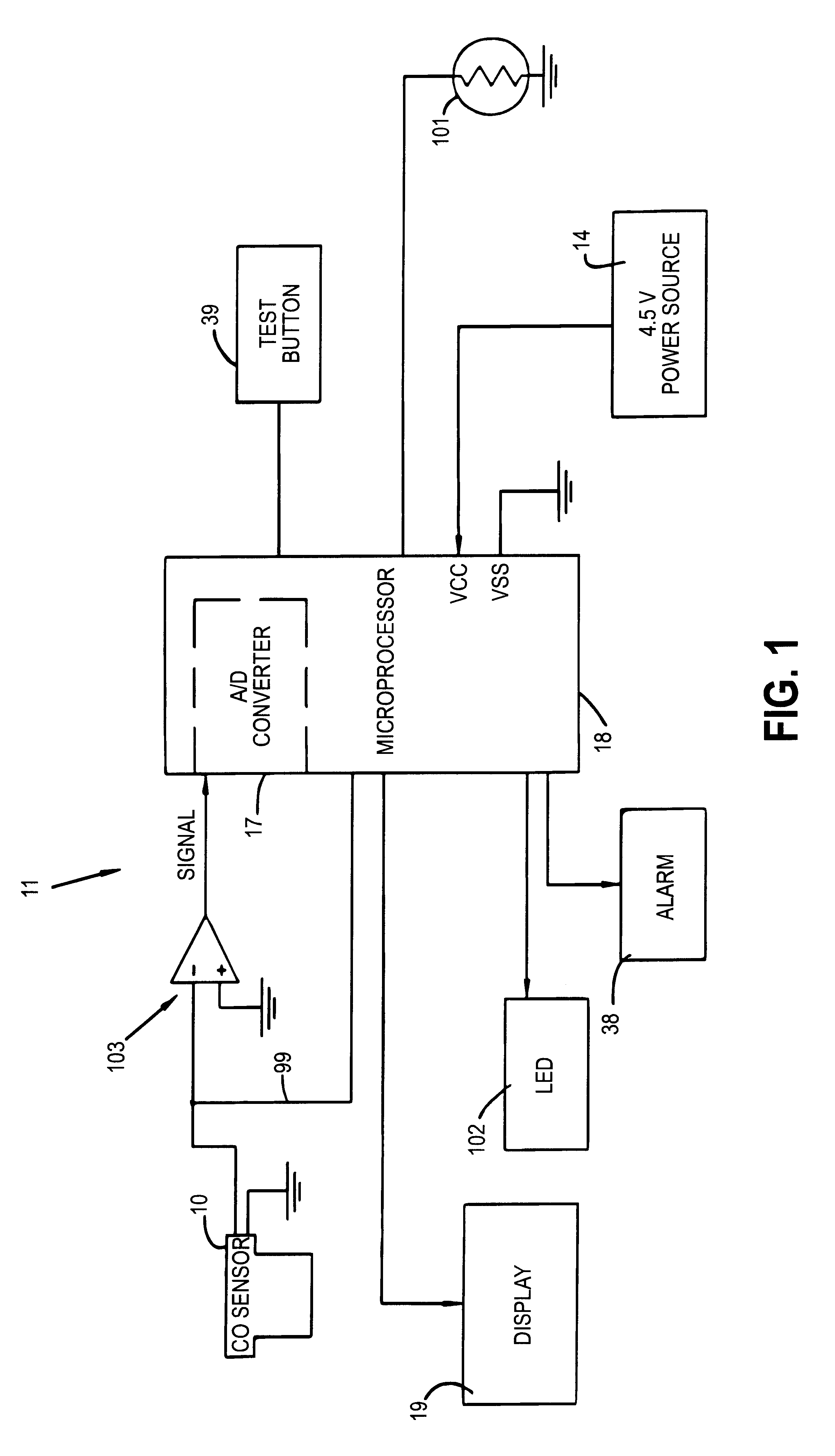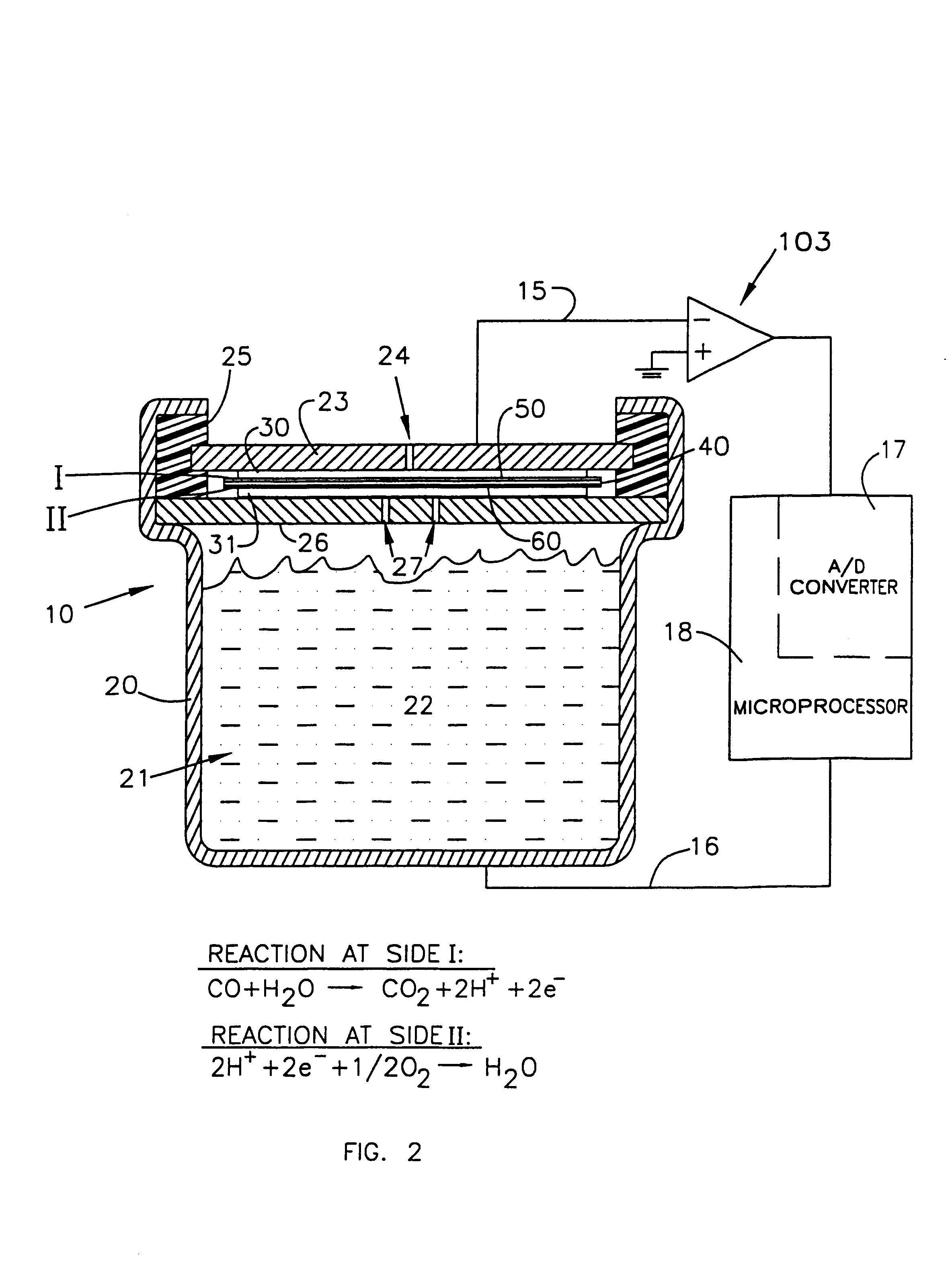Gas sensor with electrically conductive, hydrophobic membranes
a technology of hydrophobic membrane and gas sensor, which is applied in the field of gas sensors, can solve the problems of affecting internal resistance, disrupting accurate measurement, and protons moving across the protonic conductive membrane, and achieves the effects of low cost, reliability, durability and long li
- Summary
- Abstract
- Description
- Claims
- Application Information
AI Technical Summary
Benefits of technology
Problems solved by technology
Method used
Image
Examples
Embodiment Construction
[0038]It will be apparent to those skilled in the art, that is, to those who have knowledge or experience in this area of technology, that many design variations are possible for the gas sensors disclosed herein. The following detailed discussion of various alternative and preferred features and embodiments will illustrate the general principles of the invention with reference to a gas sensor suitable for measuring carbon monoxide and used in a carbon monoxide detector for use in residential or commercial buildings and recreational vehicles. Other embodiments suitable for other applications including scientific applications and automotive applications will be apparent given the benefit of this disclosure.
[0039]Referring now to the drawings, FIG. 1 shows a diagram for a toxic gas sensor 10 and detector circuitry 11 in accordance with a preferred embodiment. Detector circuitry 11 may include a programmed processor such as microprocessor 18 to regulate and control the detector circuitr...
PUM
| Property | Measurement | Unit |
|---|---|---|
| temperatures | aaaaa | aaaaa |
| thicknesses | aaaaa | aaaaa |
| thickness | aaaaa | aaaaa |
Abstract
Description
Claims
Application Information
 Login to View More
Login to View More - R&D
- Intellectual Property
- Life Sciences
- Materials
- Tech Scout
- Unparalleled Data Quality
- Higher Quality Content
- 60% Fewer Hallucinations
Browse by: Latest US Patents, China's latest patents, Technical Efficacy Thesaurus, Application Domain, Technology Topic, Popular Technical Reports.
© 2025 PatSnap. All rights reserved.Legal|Privacy policy|Modern Slavery Act Transparency Statement|Sitemap|About US| Contact US: help@patsnap.com



